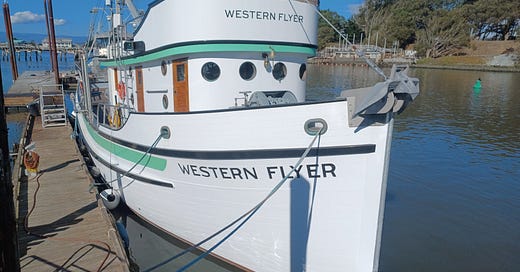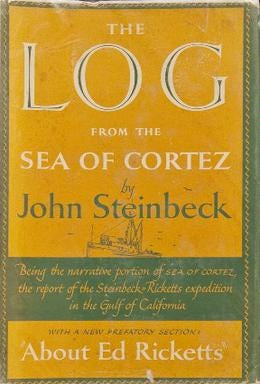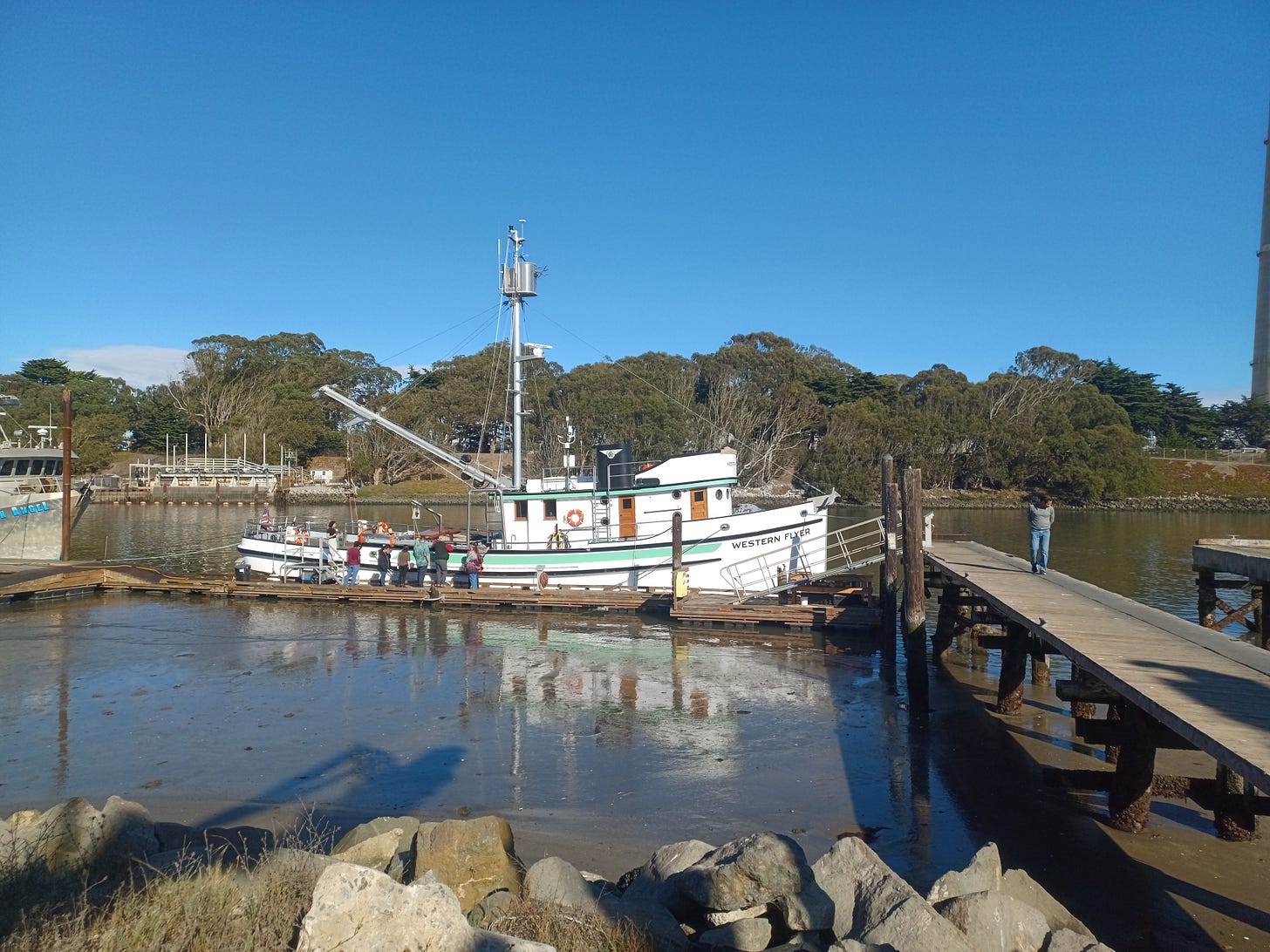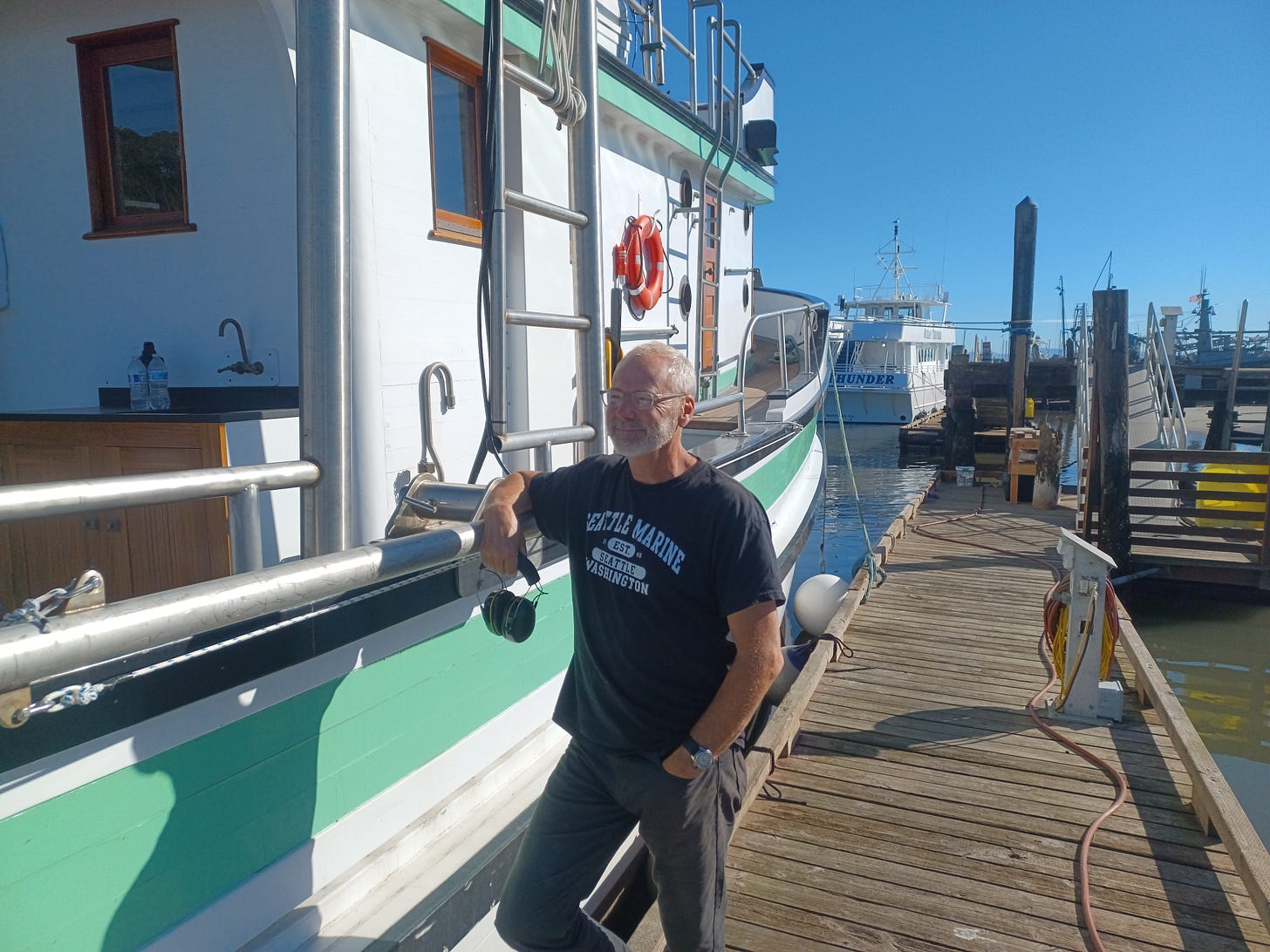Article by John Nystrom
Last October Tammy and I visited the Central California Coast, from our home in the Midwest. Full disclosure, I grew up in Santa Cruz and Monterey counties just about midway between Santa Cruz and Monterey, an area often referred to as Steinbeck Country. I didn’t, however, grow up around boats—my passion was airplanes. Other than canoeing and rowing merit badges earned at Camp Pico Blanco in the Boy Scouts, aircraft of all sorts came ahead of things that floated. Over the years the family and I occasionally rented a canoe for various outings, but I couldn’t be called a boater in all honesty. That changed in the early 2000s when a friend discovered small boats and the work of Phil Bolger and Jim Michalak. We soon built Puddle Duck Racers with the help of Dave Gray (Mr. Polysail himself), and I was hooked on small boats.
In early 2013 I broke a hip, and during recovery I decided to start reading the Steinbeck books I had skipped, including Sea of Cortez, a book documenting the 1940 trip by Steinbeck and marine biologist Ed Ricketts to the Gulf of California, which lies between Baja California and the Mexican mainland. The trip was facilitated by chartering a Monterey fishing boat, Western Flyer, and was the last scientific expedition into the gulf, AKA The Vermillion Sea, before the waters of the Colorado River were diverted to supply California agriculture and Southern California’s exploding population. The book, considered by some as Steinbeck’s most important work, is a classic of environmental writing. The Western Flyer disappeared into the Alaska fisheries after the Monterey sardine fishery collapsed after WW2. Like most wooden fishing boats of the era, it was presumed long lost to the rigors of a working life and harsh environment. Though having gone through changes in owners, names, power, and fishing gear, against all odds Western Flyer did survive, and was rescued. That story is more than I can recount here, but is documented up to 2015 by Kevin Bailey in The Western Flyer: Steinbeck’s Boat, The Sea of Cortez, and The Saga of Pacific Fisheries. At that time of publication the ultimate fate of Western Flyer was very much in doubt, but the last ten years has seen her restored as a floating classroom and laboratory. Her hailing port is Monterey, but she is bearthed in fact at Moss Landing, which is still a working fishing port on Monterey Bay.
My quest to get a look at Western Flyer during our week in California started off poorly. Between way too many family and old friends we needed to visit, by the time we got to Moss Landing, Western Flyer was out on a charter on the bay. No one was in the Western Flyer Foundation office, and the folks at Moss Landing Boat Works couldn’t tell me when the Flyer might be in port. Fortunately I was able to shoehorn in another day in Monterey for sightseeing, and we stopped by Moss Landing one last time. There not far from the Foundation’s office was Western Flyer, looking better than the day of her launching! I started taking pictures, but wasn’t able to get aboard due to a program in progress, but was able to spend some time with none other than Chris Chase, the Port Townsend shipwright who headed up the restoration of Western Flyer.
Chris now splits his time between Port Townsend and Moss Landing, where he is Project Director for the Western Flyer Foundation. We didn’t have much time available, but the one thing Chris emphasized in the course of the restoration was the amazing cast of characters who were involved in the restoration, both professionals, but especially the volunteers. Someone in the Port Townsend area needs desperately to sit down with Chris Chase to document the stories and the people who came together in making the restoration of the most beloved and famous fishing boat on the Central California Coast a reality. •SCA•
If you are interested in learning more about Western Flyer, and the mission of the Foundation, their website is here.
To learn more about the restoration, and to see interior photos, WoodenBoat magazine featured Western Flyer in issue No. 300, October 2024. The former fish hold is now a classroom/laboratory, the power is now diesel-electric hybrid, and the interior is even more beautiful than the hull and topside, if that were possible. The big news is that Western Flyer and an small expedition ship will be returning to the Baha California in April of 2025 to recreate the original Steinbeck-Ricketts expedition.







Good to know I'm not alone in loving craft that fly and craft that float (some do both)!
Read Steinbeck's book, "Log from the Sea of Cortez",is an excellent suggestion. Myself, I did not read it until I was already cruising the Sea of Cortez, yet it all was most interesting knowing how plentiful were the places to fish and the coves to anchor in. Though there are plenty of up-to-date cruising charts and books, will provide the same information. It was nice reading, for it told of areas in the Sea Of Cortez where fishing, clamming, oyster shoals and caves were located. Most are fished-out regions caused by the early seventy fishing commercial leases provided to foreign fish processing boats which sucked the Sea of Cortez dry, killing entire schools of seasonal fish. To my surprize Conception Bay was still absolutely loaded with clams, especially around Santispact (a stop on Highway One to rest. Oysters were plenty in the Northern areas of the Sea of Cortez, Like Bahia de Loa Angeles and northern anchorages. Careful to dive for Oysters which are the furthest found from the small communities for oysters depend on clean water to filtrate. I would recommend an island off of Bahia de Los Angeles for good oyster harvesting during the colder months. I learned the hard way and was very sick for months from eating tainted shell fish.